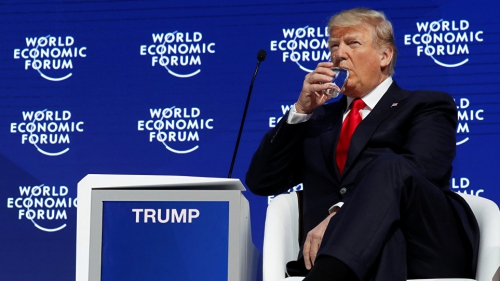One World, One Market: How Advertising Breaks Down Cultures
 |
Blonder hair, faster cars, newer and cooler video games. Why is it that the same things that tantalize a consumer in San Francisco, California are also what those in Sao Paolo or Singapore aspire to? The answer is in advertising: instead of catering to the cultures that it targets, advertisers are shaping the minds of global consumers to think like a North American consumer.
For years, people had voiced concerns that globalization would lead to the homogenization of culture by a handful of powerful corporations.
They foresaw the current situation that up to 70 percent of the world trade would be controlled by a few hundred large companies, the majority of which were in North America and Europe. It was a far more complex question than simply allowing consumers from India and South America to buy into Nike sneakers and Starbucks coffee. In order to sell these products, big corporations would have to seduce millions of people around the world to identify with a brand, an image and aesthetic that was the same as the nation of that corporation's origin. Advertisers would make housewives in Argentina buy into the same beauty standards as those in North America, boys from Chinese villages will come to identify with European sport stars in TV commercials. The language of advertising is universal, and it speaks to everyone who has been singled out as potential consumers.
How do advertisers determine which countries and demographics to reach out to? For starters, advertising presupposes a certain standard of living whereby people have disposable income, as well as a political and economic framework that enables the production of consumer goods. When multinational companies entered the Third World in the post-war period, and again in the 1990s in developing countries and others like China and India, they knew they were entering a situation of deprivation accompanied by high levels of consumer aspirations. Advertising in "emerging economies" is often aimed at captivating future consumers before they have that disposable income, as the Japanese electronic firms did in China during the 1980s, when they swapped free television programming for access to advertising to a billion-person market. Outdoor advertising is another media where advertising works to build future consumers in the world's developing nations. Most people around the world had already become exposed to American movies and television, and had started to believe in the American Dream as part of a complex entertainment package long before any consumer goods were available to them. The American myths of affluence, strength, freedom, individualism and opportunity have been some of the most seductive ideas of the twentieth century, and these ideas were transposed onto all-American products such as Coca-Cola, McDonald's and Levi's Jeans.
The messages entrenched in ads enter many facets of social life, and corporations spend an enormous amount of money each year on 'reinventing' or rediscovering culture and history for the sake of marketing. Promotion of the "American Dream" has been one of the single most successful achievements of the American media industries of the twentieth century, and many American companies use cultural references as part of their marketing, especially fast food and soft drinks: products that were available to poorer populations who wanted to come closer to the wealth and power of American consumers.
Some of the strongest criticisms of advertising are of the effects that it has on local culture. Advertisements work to create desire where there was none before; in India, where people had previously cleaned their teeth with wood-bark, the toothpaste battle was won by Hindustan Lever, the largest advertiser in India for over two decades. Coca-Cola and Pepsi are battling it out in many countries. Pepsi made significant strides in India when Coca-Cola moved out in the 1980s, but in China Coca-Cola has spent $1.1 billion a year for 20 years, and has set up bottling plants, distribution networks and training establishments and even used strategies like personal sales networks. It took ten years for them to make a profit, but the revenues that it has gained has more than made up for their losses. To satisfy the consumer aspirations of young Chinese who were looking for more than a carbonated drink to assert their new identity, Coca-Cola developed a new ad campaign called "Vibrant Connections," which gave away 7,000 free computers to technology-conscious youth.
Of course, the overall objective of advertising is to sell products, and it had traditionally done this by aligning them with key values in society. Some companies, however, have recently been very overt in the way that they use products to change the cultural values of consumers. For instance, the promoters of Beck's Beer in China aimed at promoting individualism and urged consumers to "express themselves" through buying a beer that cost three times the price of local beer. In a nation that traditionally emphasized social harmony and conformity, this campaign was daring and seductive, a rebellion against tradition. One glance past the commercial jingoism, and it would be realize that this was in fact conformity with American consumer culture, but the idea was strong enough to hold over a generation of young Chinese. According to a report by UNESCO, these kinds of corporate campaigns in developing countries were characterized by a one-way flow of information from North to South, West to East.
As advertising is aimed at selling goods and services that have monetary value, it promotes attitudes and lifestyles that emphasize acquisition and consumption rather than other values. The concentration of the advertising industry internationally means that foreign values are exported into other cultures. Certain material possessions are promoted as the norm, so that people without these possessions are made to feel deprived.
This piece is adapted from Lynne Ciochetto's presentation, "Advertising and the Globalization of Aspiration."

















